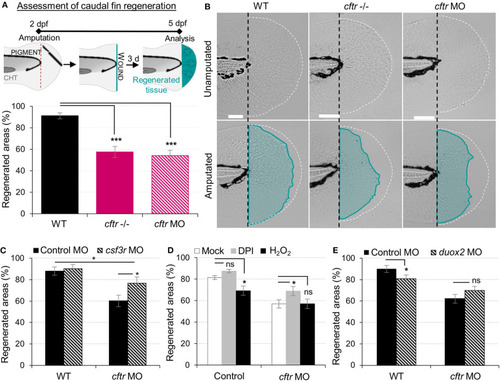Figure 4
- ID
- ZDB-FIG-200829-49
- Publication
- Bernut et al., 2020 - Deletion of cftr Leads to an Excessive Neutrophilic Response and Defective Tissue Repair in a Zebrafish Model of Sterile Inflammation
- Other Figures
- All Figure Page
- Back to All Figure Page
|
Neutrophilic response in CF hampers tissue repair |
| Fish: | |
|---|---|
| Conditions: | |
| Knockdown Reagents: | |
| Observed In: | |
| Stage: | Protruding-mouth |

